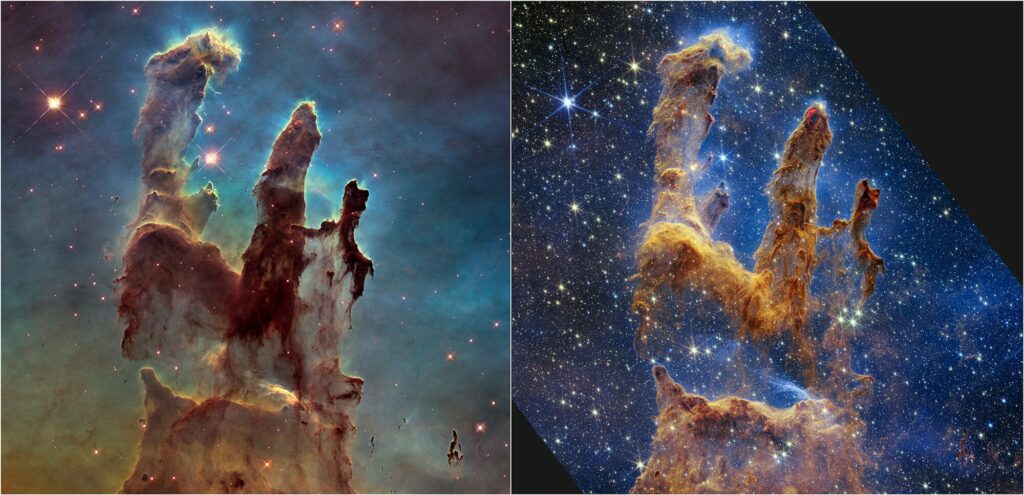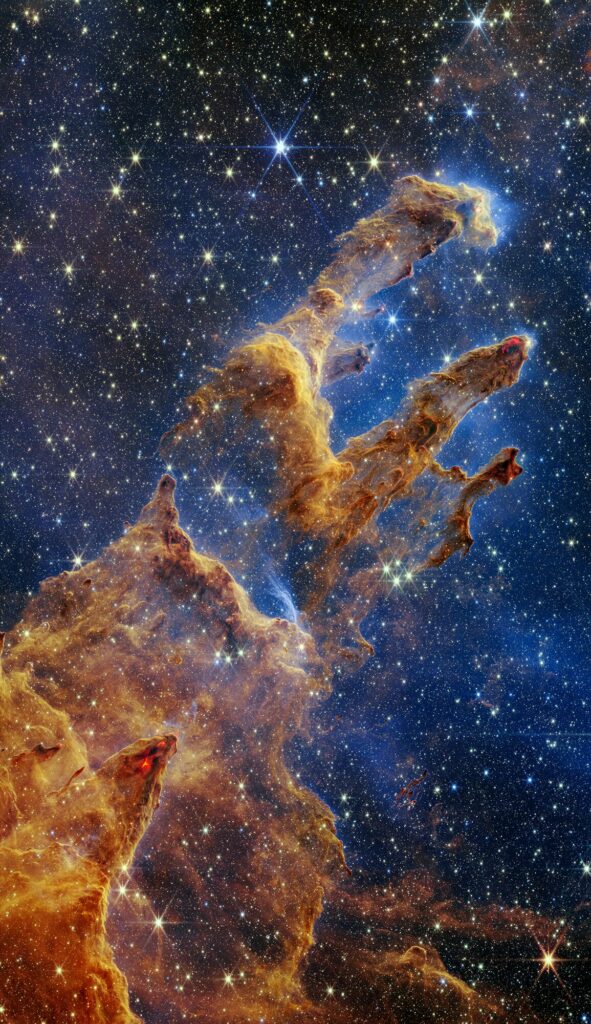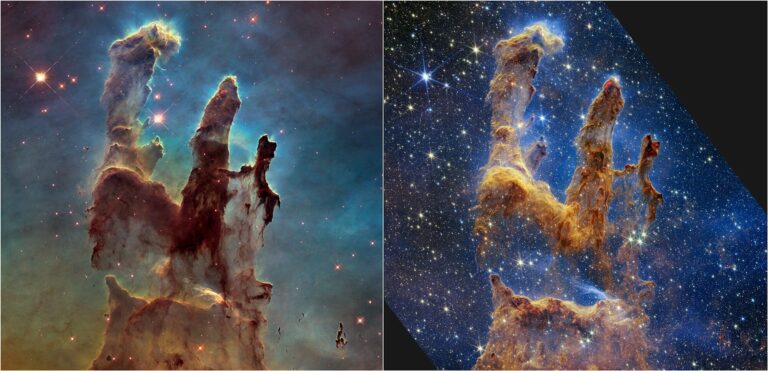New Webb Image Captures the Iconic ‘Pillars of Creation’
The renowned “Pillars of Creation,” vast structures composed of gas and dust teeming with stars, have been captured by the James Webb Space Telescope, as announced by NASA on Wednesday. The resulting image is truly awe-inspiring, showcasing the colossal golden, copper, and brown columns amidst the vastness of the cosmos.

Within these pillars, one can observe the shimmering radiance of numerous stars, illuminating the telescope’s inaugural photograph. At the extremities of several columns, there are vibrant red spots resembling molten lava. NASA explained that these are emissions from stars that are still in the process of formation, merely a few hundred thousand years old, as stated in their official statement.
The US space agency further elaborated that these “young stars periodically emit supersonic jets, which collide with clouds of material, much like these dense pillars.” Situated 6,500 light years away from Earth, within the Eagle Nebula of our Milky Way galaxy, the “Pillars of Creation” gained prominence through the Hubble Space Telescope, which initially captured them in 1995 and again in 2014.
However, thanks to the infrared capabilities of the Webb telescope, which was launched into space less than a year ago, it can penetrate the opacity of these pillars, unveiling the formation of numerous new stars. Klaus Pontoppidan, the science program manager at the Space Telescope Science Institute, expressed on Twitter that the decision to capture the “Pillars of Creation” with Webb was driven by popular demand.

Within these pillars, one can observe the shimmering radiance of numerous stars, illuminating the telescope’s inaugural photograph. At the extremities of several columns, there are vibrant red spots resembling molten lava. NASA explained that these are emissions from stars that are still in the process of formation, merely a few hundred thousand years old, as stated in their official statement.
The US space agency further elaborated that these “young stars periodically emit supersonic jets, which collide with clouds of material, much like these dense pillars.” Situated 6,500 light years away from Earth, within the Eagle Nebula of our Milky Way galaxy, the “Pillars of Creation” gained prominence through the Hubble Space Telescope, which initially captured them in 1995 and again in 2014.
However, thanks to the infrared capabilities of the Webb telescope, which was launched into space less than a year ago, it can penetrate the opacity of these pillars, unveiling the formation of numerous new stars. Klaus Pontoppidan, the science program manager at the Space Telescope Science Institute, expressed on Twitter that the decision to capture the “Pillars of Creation” with Webb was driven by popular demand.
STScI manages the operations of the Webb telescope from Baltimore, Maryland.
Pontoppidan expressed his amazement at the abundance of stars.Astrophysicist Amber Straughn from NASA summarized it by stating that the universe is beautiful, as she shared her thoughts on Twitter.The captured image, which spans an area of approximately eight light years, was taken by Webb’s primary imager NIRCam. This imager is capable of capturing near-infrared wavelengths that are not visible to the human eye.
The colors in the image have been converted into visible light for better understanding.
According to NASA, this new image will greatly contribute to refining the models of star formation. It will provide more accurate counts of newly formed stars and also help determine the quantities of gas and dust present in the region.Webb, which has been operational since July, is the most advanced space telescope ever constructed. It has already provided scientists with an unprecedented amount of data, sparking hope for a new era of discoveries.One of the primary objectives of this $10-billion telescope is to study the life cycle of stars. Additionally, it focuses on researching exoplanets, which are planets located outside of Earth’s solar system.
This article is republished from PhysORG under a Creative Commons license. Read the original article.
Do not forget to share your opinion with us to provide you with the best posts !




0 Comments